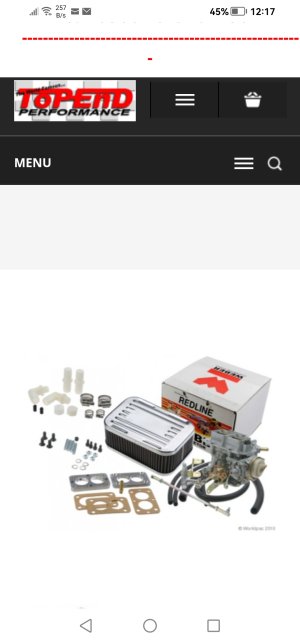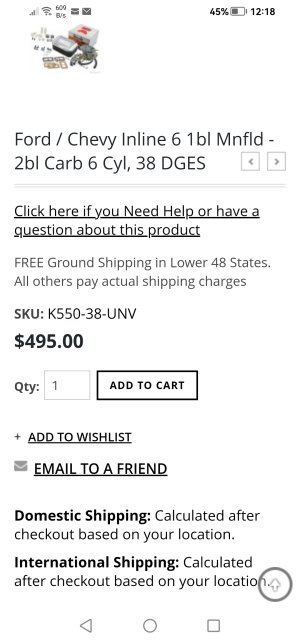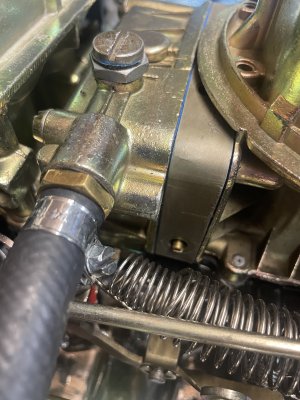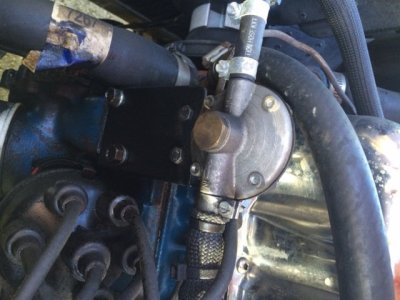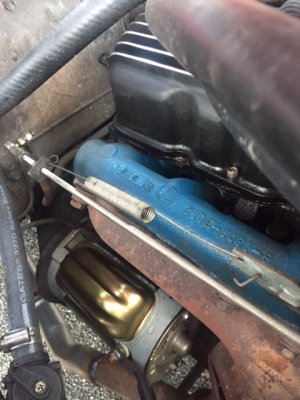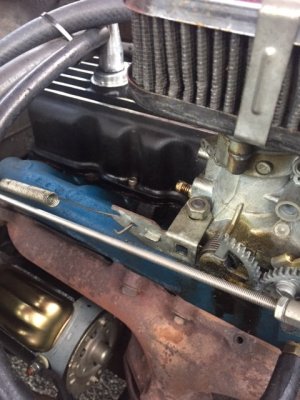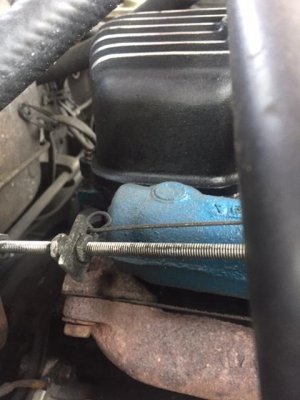Jeff,
What a great and informative discussion. I wish I had found this earlier so I could pipe up about my experience with the 38/38 on the 200 in my 66 Mustang that installed in September of this year.
Did you manage to get the Clifford or Redline Weber kit?
I installed the Redline Weber 38/38 kit. It came brand new packed in a box, with the non-running car and also an EBay header in another box. My plan was to get the car running with the stock engine and then add both the header and carb but that was not to be had, due to a spun bearing and scuffed cylinders. When I rebuilt the engine, I installed a performance cam from Clay Smith with aftermarket pistons so it’s no longer stock but it isn’t a radical build.
Because mine came with the Load-a-matic distributor, I installed a aftermarket billet HEI distributor with remote coil that looks about the same size as the OEM distributor and coil. I got it from an eBay store called SwapMeetParts1. They also have a website and a Facebook page. I’ve had emails with the owner there and he was very responsive. I connected the coil positive to a relay with +12v and ignored the factory ignition coil wire because it is on a resistor and provides about +8v which isn’t adequate.
The Weber carb is very sensitive to fuel pressure so the carb kit comes with a fuel pressure regulator, preset to about 3lbs. This is a critical part of the install and without it, the install will fail. I mounted mine to the firewall with a pair of nut-serts (rivet nuts). Factory fuel line cut and rubber hose to fuel pressure regulator, then regulator to the carb.
I took the PCV line to a remote catch can and then to the vacuum port on the log below the carb adapter. In my opinion, it’s a fairly important detail as I don’t think just having a breather is adequate for the crank case pressure that these engines can produce.
I had a few conversations with Larry Millwee at 6=8 Clifford Performance to help with the carb linkage. Otherwise with the kit and adapters, it was a very simple install. I did “port match” the gaskets to the openings by trimming them to match with a sharp knife and I used lock-tite on my carb studs. Aside from that, it bolted on without any special requirements.
For exhaust, I have my 6 into 2 EBay header hooked to a Y-pipe with 2-1/2” single to a fairly unrestricted muffler. I put a heat shield blanket over my starter to protect it from the heat from the header pipes. I haven’t experienced any heat soak issues but then again, I haven’t had it out in peak summer heat yet.
My experience
This is my experience with the new/rebuilt engine, header, carb, distributor installed with a guess where around 8 to 10 degrees of advance would be a piston 1 TDC: I turned the key and it fired right up without a hint of hesitation. I adjusted the idle speed and the car was drivable. It was running a bit on the rich side at idle, for sure and my timing wasn’t dialed in but it was passable and drivable.
Timing
The HEI distributor I bought has up to 10 degrees vacuum advance, adjusted with an allen key in the advance diaphragm and it has up to 14 degrees mechanical advance at various RPM’s, adjusted with a sleeve and springs. It’s pretty simple to adjust but I’m not sure what the suggested vacuum and mechanical advance curve would be for a stock engine. I’m still fine tuning my timing but it still runs well and works well on the highway and just cruising around town.
Setting the Idle mix
The Clifford 38/38 should come preset for the inline 6 200 but mine needed some adjustments because of the larger initial advance timing I’m running. It came with a box of jets and had #55 idle circuit jets installed. These are probably suitable for a stock engine. Idle mixture is adjusted on the front and back of the carb and should be the same for each mixture screw. There is a Weber setup page somewhere that explains how to do the mixture adjustments and it’s very simple to do. My carb had different adjustments on the mixture screws so I think the previous owner must have messed with them. It was very simple to dial it in.
Setting the electric choke
The 38/38 I have has an electric choke. It’s very simple and mine was pretty much good to go out of the box. I provided 12v ignition from the same source as the ignition coil and adjusted the high idle speed screw which is on the drivers side of the carb. There are plenty of EBay videos showing how to set it up. Now when I start the car from cold, I depress the gas pedal to prime the carb and set high idle, crank the engine and it starts right up, no questions asked. When I feel it’s warmed up, I give it a blip on the throttle and it settles to low idle.
General drivability
I’m in Canada on the west coast where winter is wet and miserable and this car is my project car so I don’t depend on it as a daily driver. If I were in Southern California or Arizona, I’d drive it every day, everywhere. As it is, I was driving if through the end of Sumer and through the fall but not for the last month. We had a sunny dry day yesterday, so I had it out then too. With this setup, it is trouble free. It starts, stops, goes around corners without a hint of trouble and seems not bad on fuel economy. it also seems fine just cruising at low RPM or ripping it up. I’m sure it would be even better if I had milled the log and opened it up to accept the mounting plate without the adapter (funnel) but in terms of a bolt on upgrade, I can’t imagine a better experience.
Cheers,
Andrew


